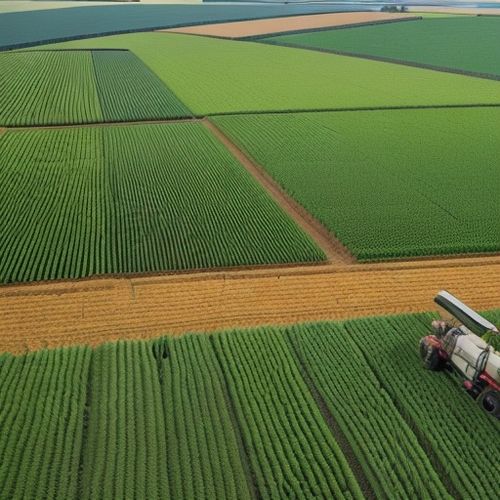The Australian agricultural sector has long been the backbone of the nation's economy, with farmers facing unique challenges that require specialized solutions. In recent years, the emergence of dedicated digital platforms tailored specifically for Australian farmers has revolutionized how they manage their operations, connect with buyers, and access vital resources. These platforms are not just technological tools but lifelines that bridge the gap between remote farming communities and the global marketplace.
One of the most significant advantages of these farmer-exclusive platforms is their ability to provide real-time market data. Unlike generic agricultural websites, these platforms offer hyper-localized information that takes into account Australia's diverse climate zones and regional variations. From wool prices in New South Wales to grain forecasts in Western Australia, farmers can make informed decisions based on data relevant to their specific location and commodity.
The social connectivity aspect of these platforms cannot be overstated. Farming can be an isolating profession, with many producers working in remote areas hundreds of kilometers from their nearest neighbor. These digital communities allow for knowledge sharing that was previously impossible at this scale. Veteran farmers can mentor newcomers, equipment dealers can demonstrate new technologies through video tutorials, and researchers can directly share their findings with those who will implement them in the field.
Supply chain management has been another area transformed by these specialized platforms. The traditional model of middlemen taking significant cuts of farmers' profits is being disrupted as producers gain direct access to domestic and international buyers. Some platforms even incorporate blockchain technology to create transparent, tamper-proof records of produce from paddock to plate, adding tremendous value for quality-conscious buyers in premium markets.
Weather prediction tools integrated into these platforms have become increasingly sophisticated, combining Bureau of Meteorology data with hyperlocal weather stations and AI-driven forecasting models. This gives farmers unprecedented accuracy in planning planting, harvesting, and livestock management activities. The economic impact of avoiding just one hailstorm or knowing precisely when to irrigate can mean the difference between a profitable season and financial hardship.
Financial management features represent another critical component of these agricultural platforms. Many offer integrated accounting systems that understand farm-specific cash flow patterns, seasonal expenses, and agricultural taxation rules. This specialized financial infrastructure helps farmers navigate the unique economic challenges of their profession, from managing multi-year investment cycles to accessing appropriate insurance products.
The environmental sustainability tools embedded in these platforms are helping Australian farmers meet both regulatory requirements and consumer expectations. Carbon footprint calculators, water usage monitors, and soil health trackers allow producers to demonstrate their environmental credentials to increasingly eco-conscious buyers. Some platforms even connect farmers with carbon credit markets, creating new revenue streams from sustainable practices.
Equipment sharing economies have flourished on these platforms, addressing the capital-intensive nature of farming. Rather than every small producer needing to own every piece of machinery, these digital networks facilitate the sharing or rental of expensive equipment like harvesters or seed drills. This collaborative approach reduces financial barriers for smaller operations while improving asset utilization across the agricultural sector.
Training and certification modules available through these platforms are upskilling the agricultural workforce in ways that were previously challenging due to geographic isolation. From livestock handling certifications to chemical application qualifications, farmers can now complete mandatory training online at their convenience. This digital approach to professional development is particularly valuable for younger farmers balancing off-farm employment with building their agricultural businesses.
The integration of these platforms with government services has created seamless channels for compliance reporting and accessing support programs. Instead of navigating multiple disjointed systems, farmers can now fulfill their regulatory obligations and apply for grants through unified interfaces. This reduction in bureaucratic friction saves countless hours that can instead be devoted to productive farm work.
Looking ahead, the next generation of these platforms is beginning to incorporate artificial intelligence in truly transformative ways. Predictive analytics for pest outbreaks, machine vision for livestock health monitoring, and automated irrigation scheduling are just some of the emerging applications. What makes these developments particularly powerful is that they're being designed in collaboration with farmers, ensuring the technology solves real problems rather than creating unnecessary complexity.
The success of these Australian farmer-exclusive platforms demonstrates how targeted digital solutions can empower traditional industries. By addressing the specific pain points of agricultural producers with technology rather than offering generic tools, these platforms have achieved remarkable adoption rates. As they continue to evolve, they promise to further strengthen the competitiveness and sustainability of Australian farming in an increasingly challenging global environment.

By /Jun 17, 2025

By /Jun 17, 2025

By /Jun 17, 2025

By /Jun 17, 2025

By /Jun 17, 2025

By /Jun 17, 2025

By /Jun 17, 2025

By /Jun 17, 2025

By Sophia Lewis/Apr 19, 2025

By Elizabeth Taylor/Apr 19, 2025

By James Moore/Apr 19, 2025

By Rebecca Stewart/Apr 19, 2025

By Ryan Martin/Apr 19, 2025

By James Moore/Apr 19, 2025

By Sarah Davis/Apr 19, 2025

By George Bailey/Apr 19, 2025

By James Moore/Apr 19, 2025

By Amanda Phillips/Apr 19, 2025